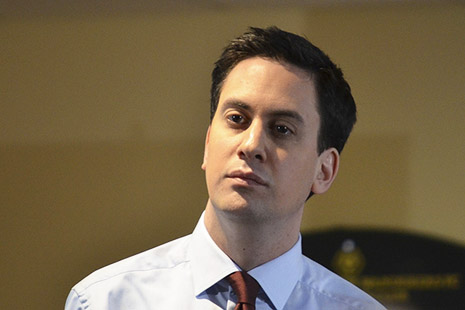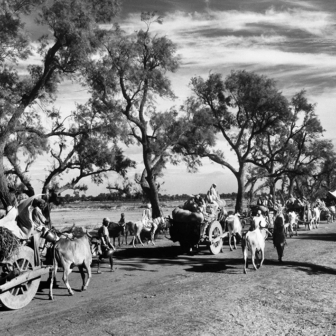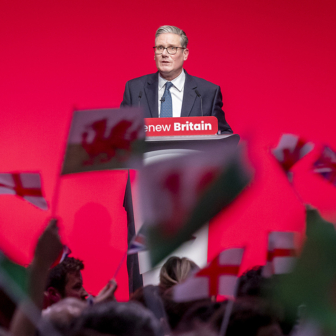Just as the crisis engulfing the Murdoch family emboldened Britain’s political class to announce (yet again) the inauguration of a new politics, a voice from the old spoke up. Lecturing at the New Labour think tank, Progress, Tony Blair reassured his audience that while the world had changed, the word would stay the same.
“I remain unremittingly an advocate of third way, centre ground, progressive politics that came to be called New Labour. From 1997 to 2007 we were New Labour. In June 2007 we stopped. We didn’t become Old Labour exactly,” he added, in a generous concession to the man he was attacking, Gordon Brown. “But we lost the driving rhythm that made us different and successful.” Blair did not mention that if his “driving rhythm” had been successful in overcoming the resistance of his chancellor, it would have seen Britain join the euro – with disastrous consequences.
Blair also warned the party against moving to the left, against indulging in a “politics of protest.” His was an unabashed defence of Labour as a progressive party, one with the courage and imagination to be a party of “change-makers.” But there is nothing so retro as a politician whose language no longer speaks to the times. And for all his electoral success, Blair long ago ceased to speak to the times. His neophilia belongs to another age, and is about as relevant to ours as Harold Macmillan’s “never had it so good” and Harold Wilson’s “white heat of technology.”
In any case, since the 2010 election Labour has given few signs of tacking to the left. On the contrary, a significant group of thinkers inside the party is arguing for a radical conservatism – if that’s the word for it – which is otherwise known as Blue Labour. Recently described in the Independent as “Westminster’s most voguish intellectual tendency,” Blue Labour is the talk of the town – at least among the small minority who worry over such matters as the renewal of Labour politics. The key figure here, and the man who coined the term itself, is Maurice Glasman, or Baron Glasman of Stoke Newington and of Stamford Hill in the London Borough of Hackney, as he has been called since his elevation to the House of Lords earlier this year. Glasman is also an academic at London Metropolitan University who came to the attention of the Miliband brothers largely through his role as a community activist leading an alliance of organisations called London Citizens. Among its work has been a high-profile community campaign to persuade businesses to adopt a living wage.
The Labour MP most closely associated with Blue Labour is Jon Cruddas, but both Miliband brothers appear to be keeping a watchful eye on the project. Initially, Glasman seemed closer to the older Miliband brother, writing a key speech that David delivered during the Labour leadership contest embodying ideas now associated with Blue Labour. But it was the winner of that contest, Ed, who nominated him to the House of Lords, and Glasman is now regarded as part of the opposition leader’s intellectual circle. James Purnell, the strongly Blairite former work and pensions secretary, has also identified with Blue Labour.
But Glasman, who combines a formidable intellect with the skills of a successful political entrepreneur and an old-fashioned social compassion, is the founder and main inspiration. Blue Labour’s guiding principle is that people and nature were not produced to be sold, and so should not be treated as commodities. A democratic politics must resist capitalism’s tendency to treat them in this way. In this view, Glasman is influenced by the Hungarian philosopher and economist Karl Polanyi, on whose ideas Glasman drew in Unnecessary Suffering: Managing Market Utopia (1996), a book based on the doctoral thesis he completed at the European University Institute in Florence. It made a case for the kind of social market developed in West Germany after the Second World War, one in which democratic organisations and institutions – many of them devoted to developing and maintaining vocational skills – prevented a domination by either state or market. Here was a “third way” politics, but one rather different from that of Blair and New Labour. Glasman contrasted the West German social market with what he called “market utopia,” in which equilibrium can supposedly be achieved without the intervention of voluntary organisations or a democratic state. He calls his own vision the “virtue economy,” a truly skilled and productive society to be contrasted with a “virtual economy” dominated by the banks.
Critics sometimes accuse Glasman of nostalgia – by which they seem to have in mind a nostalgia about British working-class life – but Unnecessary Suffering has very little at all to say about Britain; it is mainly concerned with West Germany and Poland. Glasman did, however, point out that it was the policy of a British Labour government in its occupation zone after the war that helped facilitate the West German social market, in contrast with the more freewheeling approach of the United States. Here, there is a quiet claim for the social market as a legacy of British Labour thought rather than an exotic phenomenon.
NOTWITHSTANDING the impressive recovery of the German economy since the 2008 crash, Glasman and Blue Labour now seem to have less to say about the German model of the social market than about reciprocity, mutuality and solidarity, values that locate their ideas in a longstanding and very British tradition of working-class voluntary action and self-help. But on this point, too, there are critics, who worry over Glasman’s understanding of the history of British labour and welfare. The historian Pat Thane has pointed out that the mutual tradition only ever covered a minority of the population. It left large numbers of vulnerable people to the mercy of the market, with women in particular commonly finding themselves outside its net. State welfare developed, often in tandem with voluntary action and in response to demands from voluntary sector activists, to bring social protection to people unable to gain access to the “democratic” institutions celebrated by Blue Labour.
Glasman, it should be said, is not opposed to state action. Governments have a role in supporting the voluntary organisations that he sees as critical in democratising the economy and promoting vocational skills. Nevertheless, 1945 and the Attlee government represented “the trigger” for a “long-term decline” in which the “universal benefit replaced mutual responsibility as the basic principle of welfare.” Glasman looks more fondly on Labour’s earlier traditions of cooperation.
Audiences of the secular, cosmopolitan, left-leaning and middle-class variety are most likely to shift uncomfortably in their chairs when Glasman starts talking about patriotism. He locates Blue Labour as part of a radical English – and with less confidence, I think, a radical British – patriotic tradition in a manner occasionally reminiscent of E.P. Thompson but looking specifically to the ideas of R.H. Tawney and G.D.H. Cole. The identification of the left with patriotism was once more or less taken for granted but since the 1960s has become a much less comfortable fit. Central to Glasman and Blue Labour’s vision, however, is the value of the local and familiar, including a love of family, country and popular culture. Unrestrained capitalism threatens all of them; hence Blue Labour’s defensive, even conservative mission. But in its resistance to capitalism’s drive towards commodification and the state’s drive to managerialism, it also claims to be radical.
There are perhaps dangers in this vision, with its emphasis on “the preservation of status,” “attachment to place,” common sense in preference to “external values,” and a commitment to “a common life.” In April Glasman was widely quoted in the press as accusing Labour in government of having “lied to people” about immigration, causing “a massive rupture of trust.” “Working-class men can’t really speak at Labour Party meetings about what causes them grief, concerns about their family, concerns about immigration, love of country, without being falsely stereotyped as sexist, racist, nationalist,” he added.
It is, of course, legitimate to criticise Labour’s approach to immigration, and to point to the very real limits of the progressive middle-class imagination in such matters. The latter has not always been well attuned to the concerns of working-class people who, in times of growing scarcity, rightly worry over access to jobs, housing, welfare and medical care. This was revealed all too starkly at the last election when Gordon Brown, not realising that his microphone was still on, referred to Gillian Duffy, a Rochdale grandmother, as a “bigoted woman” after she had raised the issue of immigration with him. But it’s also worth considering what Blue Labour’s priorities might mean for how communities respond to strangers. A Blue Labour rejoinder would perhaps focus on the building of relationship-based conversations about people’s shared goals. All the same, those who imagine Blue Labour might translate easily to Australia will need to consider how it might react with the country’s poisonous asylum-seeker politics.
Glasman celebrates the working class’s attachment to popular culture. But in response to a lecture Glasman recently delivered at King’s College London, the labour historian Ross McKibbin pointed out that the dominant modes of popular culture in Britain during the twentieth century have been commercial; a point of which we have been forcibly reminded by the phone-hacking controversy. Of course, not everyone who opens a copy of the late and lamentable News of the World, or indeed any of the other red-top tabloids, will share the values that these publications celebrate. Nonetheless, millions of people delight in the consumption of commercial popular culture, which is national and global, not local. Glasman would like to see Britain’s football clubs pass out of the ownership and control of foreign capitalists and back to local communities. But millions of Britons continue to take pleasure in the successes of their team, even when they know that it is essentially a business being run for private profit. In these cases, trust functions – or falters – less in horizontal relationships among ordinary citizens sharing a common life than between those who create popular culture for profit and those who buy it from them.
“Faith communities” have a particularly important role to play in forming the kind of democratic local culture that Glasman advocates. Members of different religions will not be able to agree on everything but they can usually agree over the value of family life. For this and other reasons, they have good cause to worry about capitalism’s tendency to turn everything into a commodity. The campaign for a living wage, says Glasman, is an example of the kind of agreement possible among faith communities when they decide to work with the matters they have in common rather than their disagreements and disputes. Glasman’s work on West Germany has been critical in informing this understanding. While Christian Democracy and Social Democracy represented different and often antagonistic traditions in a German context, they were able to find sufficient common ground to agree on the essentials of the social market, a society that avoided domination by either market or state.
DOES Blue Labour offer any lessons for Australia? It’s not hard to find Australian left intellectuals who have been developing ideas along parallel lines: Race Mathews’s writings on cooperatives and Tim Soutphommasane’s effort to reclaim patriotism for the left spring to mind. I recently invited Glasman to the Menzies Centre for Australian Studies here in London to talk about the possible implications of Blue Labour for Australian Labor. Apart from claiming Shane Warne as a Blue Labour icon, he identified the strength of Catholic social thought in the history of the Australian Labor Party as a point of connection with Blue Labour’s stress on faith communities.
Here, Glasman raises a good point. Catholic social thought helped mobilise support for Labor in the early years of the party, not least by giving the bishops a premise with which to argue to their congregations that the party was acceptably reformist rather than an unacceptable continental-style socialist party. While not free of sectarianism, the labour movement was a place where Catholics and Protestants could cooperate. And although it was divisive in the 1940s and 1950s, when it came to be identified with Bob Santamaria and “The Movement,” Catholic social thought has often worked for the left in recent years, providing secularists and Catholics with a “social justice” platform on which to cooperate around issues such as union rights, Indigenous reconciliation and asylum seekers. The overall effect has probably been to bring back to Labor some of the children of those who abandoned it for the conservative parties in the 1950s.
Blue Labour’s stress on community organising and revitalising Labour’s grassroots might also have resonance within the Australian Labor Party at a time when it is considering the national review undertaken by John Faulkner, Bob Carr and Steve Bracks. The review calls for the revitalisation of the party below and, like Blue Labour, envisages a Labor Party enlivened by “a community-organising model” that would seek to “empower and equip members to work in their local communities on campaigns, to build stronger community connections and to recruit members.” Its controversial recommendation for community involvement in preselecting candidates also emerged in Blue Labour discussions.
There is an important sense, however, in which Glasman and Blue Labour are involved in an enterprise that does not have an obvious Australian parallel. The debate about the future of the Australian Labor Party seems confined mainly to essentially electoral, sociological and organisational issues. Why are the branches dying? Why has the educated “political class” taken command of the party? What is to be done about unions? How can factionalism be reduced? How can Labor reconcile its inner-city support base with the need to appeal to suburbanites? These are all important questions, but not half as important as, say, what kinds of ideology, image and policies should a centre-left party embrace in a country whose economic success depends on selling resources to China?
By contrast, while Blue Labour could not yet be said to have generated a large number of original public policy ideas, it is grappling with big questions about how a party of the left might respond creatively to the problems being thrown up in modern, post-crash, post–New Labour Britain. It’s part of a wider conversation about ideology and policy, and the most significant response so far to David Cameron’s Big Society – with its stress on winding back the centralised state in favour of local and voluntary effort – and to the main inspiration for that Conservative “vision,” Phillip Blond’s Red Toryism.
But Blue Labour is also a reaction against the “driving rhythms” of Tony Blair and New Labour, with its centrally directed targets, its top-down managerialism, its meddling bureaucracy, and its suspicion of – and even contempt for – grassroots, democratic organisation. In place of Blair’s “driving rhythms,” Blue Labour values the gentler pulses of settled communities, loved places and cherished traditions. •




